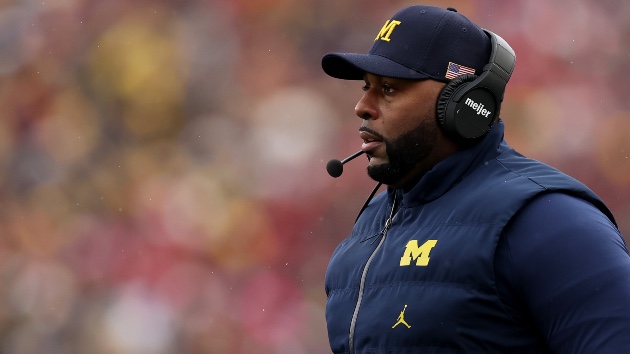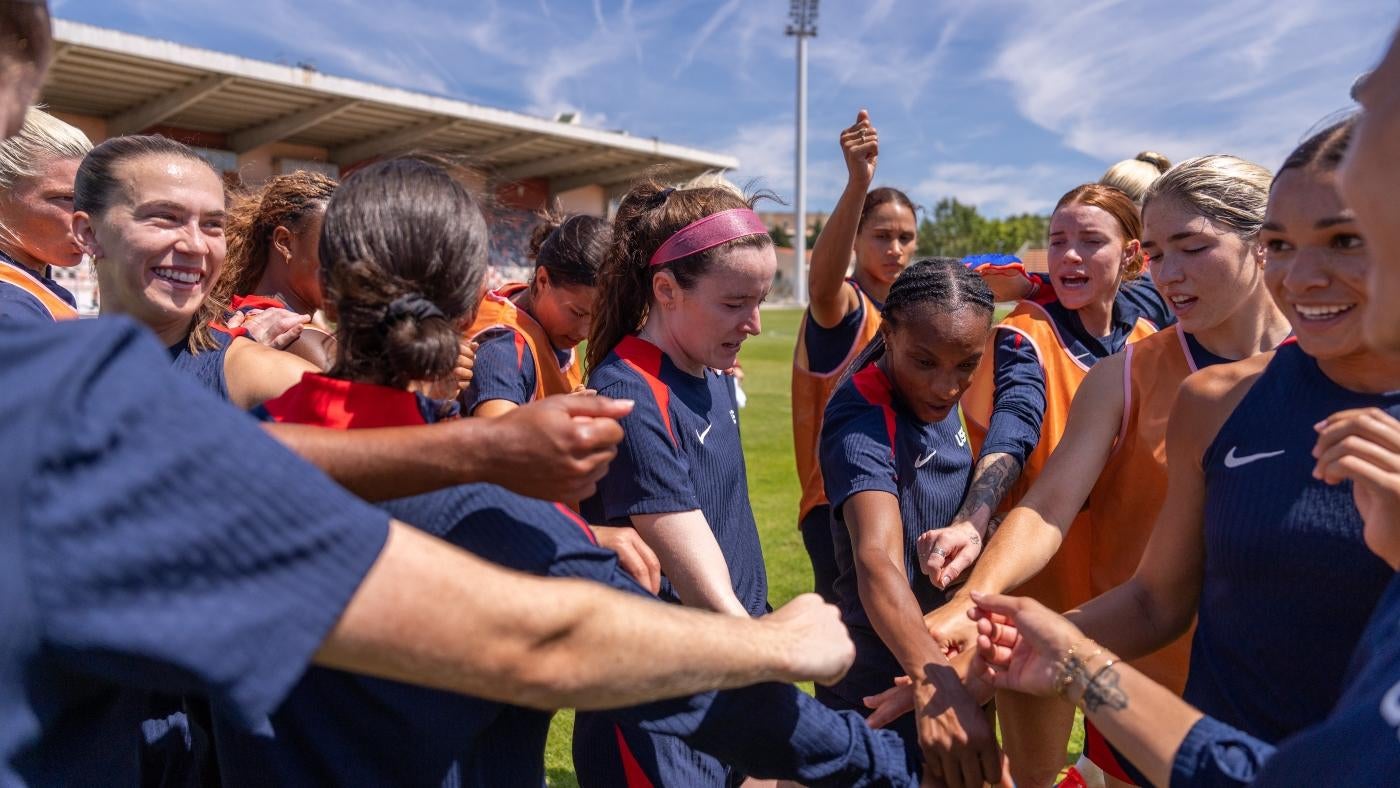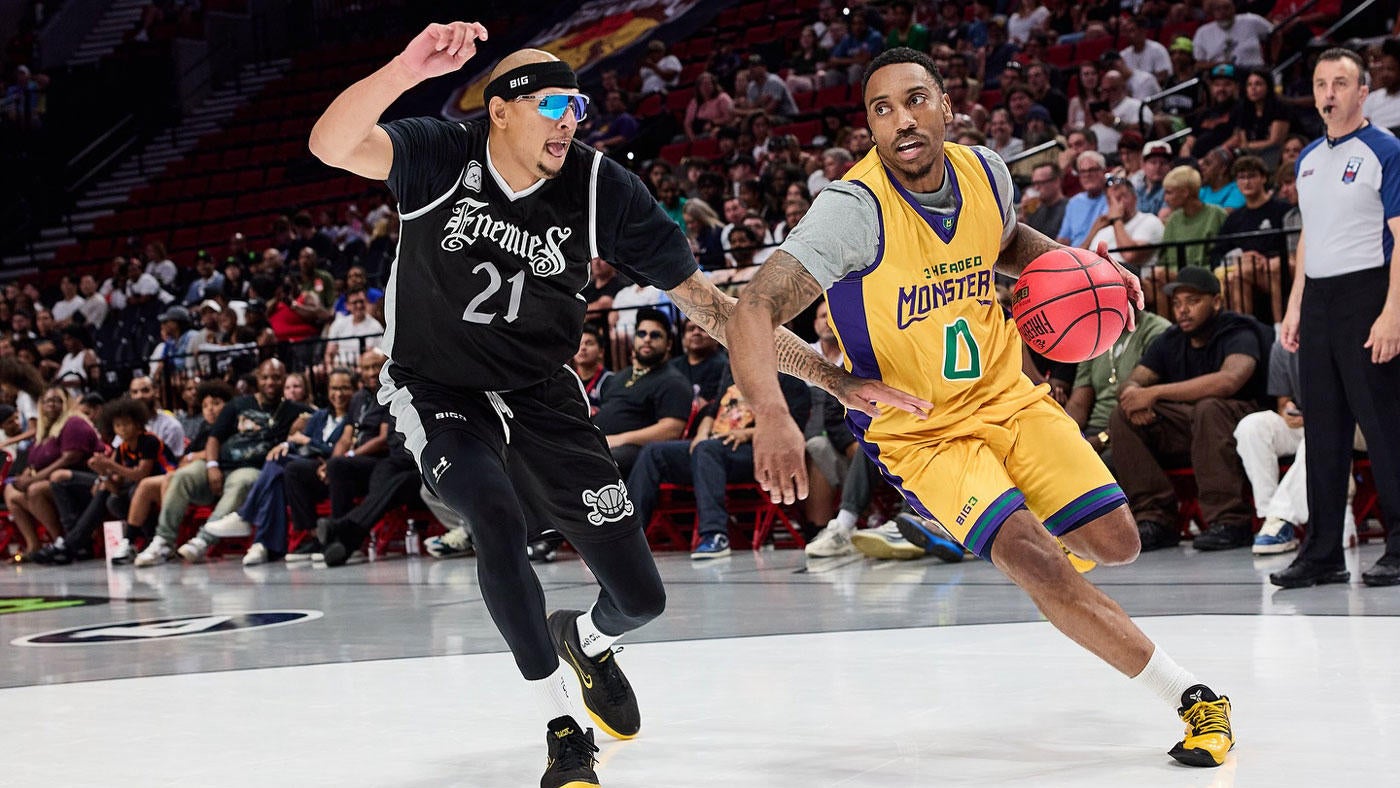Talent Tracker: How we’d divide $20 million across Ohio State’s roster, plus LSU’s ‘freak’ commit of the week
Written by CBS SPORTS ALL RIGHTS RESERVED on July 28, 2024
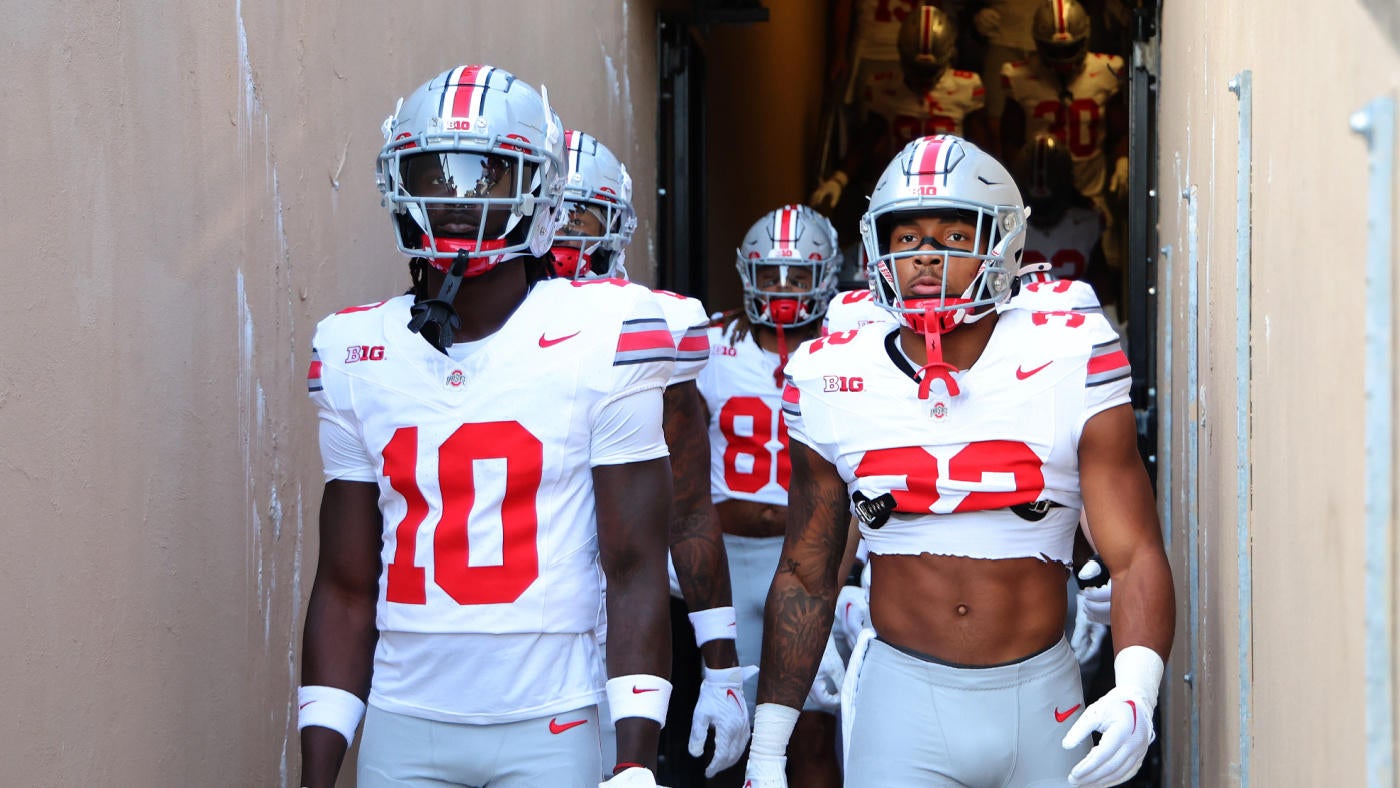
Your weekly serving of college football roster acquisition thoughts — recruiting, transfer portal, you name it — from 247Sports Director of Scouting Andrew Ivins.
How I’d spend OSU’s $20 million
Ohio State athletics director Ross Bjork raised some eyebrows earlier this week at Big Ten Media Days when he told Yahoo! Sports that Buckeye football players received “around $20 million” in name, image and likeness (NIL) money from collectives and brand affiliates this past year. That figure is believed to be the highest in the sport.
While Bjork didn’t share any details as to who is making what at Ohio State, multiple industry sources acknowledged that the number Bjork provided is plausible. The reality is very few people would know. Even fewer would know how exactly it was divided up.
Regardless, it got my mind churning.
In the current college football landscape there is no transparency when it comes to paying players. Deals are sometimes leaked by agents and dollar amounts are frequently discussed in passing, but no one really knows what the price tag is for a player besides the individuals signing the contracts behind closed doors. And from what I have gathered, every school is set up differently.
Some players are on year-long deals. Others have month-to-month agreements. But with no single entity representing the players as a whole like the NFLPA does with the NFL, there are no rules. Collectives can pay players whatever they want, whenever they want. But just because it’s a free market doesn’t mean schools aren’t being extremely calculated with their funds.
One College Football Playoff regular told 247Sports a few months ago that they had consulted multiple NFL front offices about salary cap management. Another shared that they were purchasing software to help maintain the books. They likely aren’t alone. In a sport where everyone is trying to find an edge, maximizing every single dollar is quickly becoming the new goal. Think about the movie Moneyball, only your competition doesn’t know what you’re paying.
With all that being said, I thought it would be fun to take a stab at what Ohio State’s $20 million payroll might look like heading into the upcoming season. As a disclaimer, this is just one man’s opinion after talking with multiple people that construct rosters around the country.
To set the stage, current NCAA rules pertinent to this roster allow for 85 scholarship players, although that number is growing to 105. The $20 million that Ohio State players received last year might seem a bit astronomical, but the salary cap for the upcoming NFL season jumped to $255.4 million per team and that doesn’t even include performance-based pay and benefits organizations can pay out.
Using the NFL as a compass, we know quarterbacks are the most valued players with the top five paid signal callers accounting for roughly 18 to 24 percent of their team’s salary cap. Some of those obviously are not team-friendly deals.
Ohio State’s quarterback room is considered one of the deepest in the country, but there isn’t a clear-cut superstar. At least not yet. Veteran Will Howard arrived from Kansas State during the winter months. According to Nebraska head coach Matt Rhule, who was courting Howard, a “good quarterback” in the transfer portal costs $1.5 or $2 million. Was he talking about Howard? Probably, but sources have indicated that Howard’s deal is much closer to $1 million than it is $2 million — a number which is more in line with the real market value. That leaves us with $19 million to go, but we’re done with quarterbacks.
The Buckeyes also landed former five-star Julian Sayin this offseason after he decided to leave Alabama and have three more quarterbacks on the roster: Devin Brown, Lincoln Keinholz and Air Noland. The idea of paying Sayin, who has yet to play a snap of college football, a significant amount of money at this stage might be hard for some to justify, but you’re only as good as your backup quarterback (just ask FSU) and there’s already plenty of buzz coming out of Columbus about Sayin.
Let’s mark Sayin down for $1 million, which honestly might be on the lower end of what high-profile quarterback recruits are getting these days. The other three quarterbacks should in theory be a bit cheaper, but if you want quarterback depth you’re going to have to open up the wallet because if you’re not paying them, somewhere else will. All in all we have allocated a total of $4 million for the five quarterbacks.
One other thing to consider with Sayin is the fact that younger players are expecting more NIL compensation than the elder players as their recruitments were often centered around it. As one Power Four staffer put it, “the older guys are easier (to work with).”
With the quarterbacks taken care of, the next priority is going to be pass rushers and pass protectors. After Patrick Mahomes, the highest-paid player on the recent Super Bowl-winning Kansas City Chiefs was defensive lineman Chris Jones. Right behind him was offensive guard Joe Thueny.
Ohio State has two potential first-round picks on the defensive line in JT Tuimoloau and Jack Sawyer. We’re giving them each $1 million because we want to sack the quarterback. We’re also going to give that same number to guard Donovan Jackson, the team’s top returning offensive lineman because we want to protect the quarterback.
What’s unique about Tuimoloau, Sawyer and Jackson is that all three turned down NFL money to come back to school for one more year. But they weren’t the only ones that made that decision; so did wideout Emeka Egbuka, running back TreVeyon Henderson, cornerbacks Denzel Burke and Jordan Hancock, safety Lathan Ransom, linebacker Cody Simon and defensive tackles Tyleik Williams and Ty Hamilton.
We’re tempted to give the other battle-tested stars a $1 million deal, but positional value does play a factor and funds are already starting to get tight.
Someone has to fill the void left by Marvin Harrison Jr. and Egbuka looks primed to answer the call. He gets a team-high $1.5 million as we view him as the focal point of the offense and the face of the program.
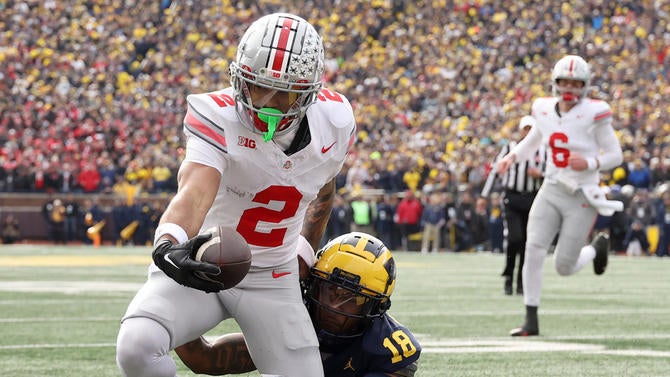
The next two highest-paid players from the group that passed on the NFL are cornerbacks Denzel Burke and Jordan Hanock. We’re in a passing era and you need defenders who can eliminate game-breaking pass catchers, so let’s say each has a $750,000 sticker price to shade the perimeter. Ransom’s deal should come in right behind the corners at $600,000 while Simon, Williams and Hamilton all earn $500,000 each.
That leads us to Henderson. There has been plenty of debate about what running backs should be paid in the NFL these days and the position continues to be devalued. We’re not too worried about Henderson’s longevity in this exercise as the goal is to win, and win now. For me, he’d make $550,000, as does Ole Miss running back transfer Quinshon Judkins.
If you’re keeping track at home, we have now assigned $13.2 million of our allotted $20 million, and we have only covered a fraction of the roster. This is also where opinions begin to split on who should be paid and how much with philosophies varying.
In our mock breakdown, we have invested heavily so far in what we consider premium positions while also taking care of proven commodities. Some schools like to reward the players inside their two deeps with extra compensation. Us, too. We also want to ensure that some young talent is happy, which is why we’re giving hefty deals to budding stars like Alabama transfer safety Caleb Downs and wide receiver Jeremiah Smith, who each get $500,000 in their first season with the Buckeyes. We also had to negotiate against others to get them.
That leaves $5.8 million. If we split that up between the rest of the roster, it would come out to roughly $65,000 a player. I’m sure plenty of people reading this story would be more than happy with that type of yearly salary (especially when classes, lodging and meals are being taken care of by the university), but certain contributors are going to warrant more and you don’t want to imbalance the complex ecosystem that is a locker room.
A more sensible option would be paying additional starters $300,000 and those inside the two-deep $100,000. That would lead roughly $1.5 million to be divided up throughout the rest of the roster.
Is this a perfect formula? Who knows, and I would say probably not, but whichever school does figure it out first is going to have a major advantage because it won’t be long before teams with players on “hometown discounts” are the ones breaking into the College Football Playoff.
Sneaky-good commit of the week
DL Josiah Sharma to Texas
“Flip season” is usually reserved for the months of November and December, but Steve Sarkisan busted out the spatula a little early this year to pull off what could be one of the biggest coups of the entire cycle as Texas pried defensive lineman Josiah Sharma away from Dan Lanning Oregon. Sharma might be a three-star prospect right now, but he’s got plenty of fans behind the scenes at 247Sports as he can push pockets and change directions like few others that tip the scales at just over 325 pounds. The Longhorns have struggled to restock the interior of its defensive line through the high school ranks in recent cycles and Sharma, who is of Fijan descent, should be viewed as a major win as he’s got plenty of developmental upside.
‘Freak’ of the week
WR Derek Meadows, LSU commit
South Carolina wide receiver Nyck Harbor has turned into a fan favorite on EA Sports College Football 25 with his 99 speed rating, 99 acceleration rating and 98 jumping rating. We might not ever get another Harbor, but Derek Meadows is pretty close. The five-star wide receiver was named the 2023 Gatorade Nevada Boys Track & Field Player of the Year after he captured gold in the 300-meter hurdles and silver in the 110-meter hurdles at states. What makes that even more impressive is the fact that he’s 6-foot-6, 200-pounds. Meadows picked LSU over Notre Dame and plenty of others last weekend on the 247Sports YouTube channel. He only caught 15 passes as a junior, but the size/speed combo makes him one of the biggest freaks in the class.
LSU’s 2025 Class is up to three five-star commits.
The post Talent Tracker: How we’d divide $20 million across Ohio State’s roster, plus LSU’s ‘freak’ commit of the week first appeared on OKC Sports Radio.




